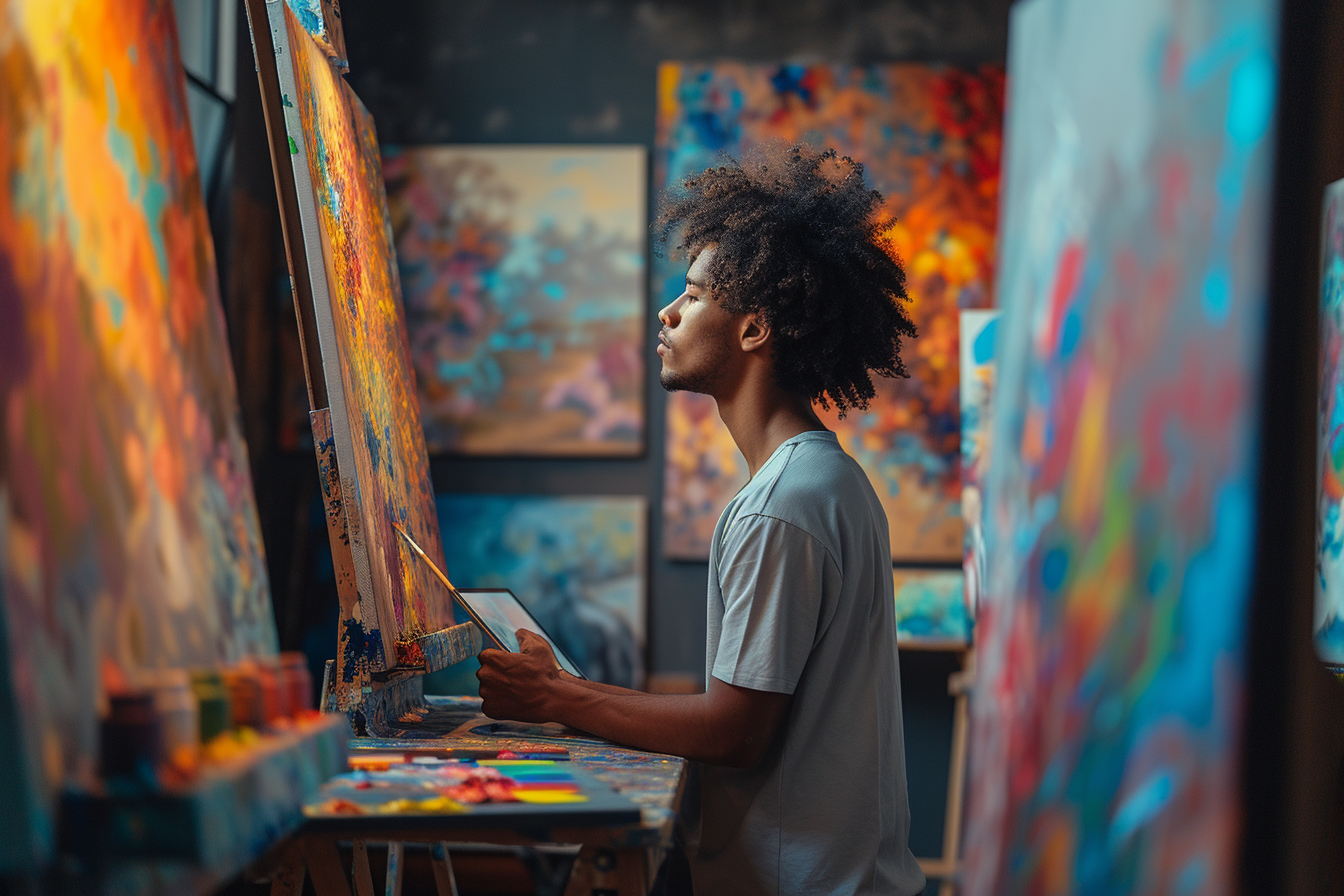Digital painting represents a blend of traditional painting techniques applied using digital tools. The field has burgeoned as creative minds gravitate towards the potential held within tablets, styluses, and sophisticated software. Artists can simulate a plethora of media, from acrylic and oil paints to watercolor and charcoal, all within the digital realm. This versatility opens a universe of possibility for creative expression.
Mastering digital brushes
Harness the power of custom brushes
Custom brushes are the cornerstone of effective digital painting. With them, artists can replicate the exact stroke, texture, and finish they envisage. These digital brushes can range from mimicking traditional brushes to creating abstract textures. By adjusting attributes such as size, flow, and opacity, artists can produce strokes that truly resonate with their artistic intent.
Experimentation leads to perfection
Continuous experimentation is vital. By trying different brush settings and combinations, artists often discover new effects that can enhance their artwork. Some software allows for the creation of custom brush presets, enabling artists to save their favorite settings for future projects.
Exploring the canvas of pixels
High-Resolution canvas: a closer look
The digital canvas – a grid of pixels – is where artistic visions come to life. Higher resolutions allow for more detail and a richer viewing experience, especially on larger scale works. When zoomed in, the pixel grid is more evident, providing the artist an opportunity to fine-tune the smallest details.
Choosing the right resolution
Selecting the right resolution and canvas size is more than a technical choice; it affects the visual quality and scalability. A larger canvas grants more freedom of detail, but also requires more processing power. Conversely, a smaller canvas is less demanding on the system but might limit the complexity and refinement of the work.
Layer upon layer: the digital advantage
Strategic layer management
Traditional painters often had to commit to strokes knowing they could not be undone easily. Digital painting sidesteps this limitation with the use of layers. This feature allows for non-destructive editing, where each element can be adjusted independently without affecting the rest of the painting. Proper layer management is a skill within itself, enabling artists to work with more flexibility and less anxiety.
Masks and adjustment layers
Masks are powerful tools in the digital painter’s toolkit, enabling selective hiding and revealing of artwork elements. Adjustment layers work synergistically with masks, permitting color and tonal adjustments without permanently altering the underlying layers.
Color and light: crafting the atmosphere

The spectrum of digital colors
Color choice plays a pivotal role in setting the mood of a digital painting. Software provides artists with an immense palette, far beyond what traditional media could offer. By understanding color theory and relationships, artists can effectively use digital color to engage emotions and bring their scenes to life.
Dynamic lighting techniques
Lighting in a digital painting can make or break the illusion of depth and form. By skillfully manipulating light and shadow, artists can imbue their work with a sense of realism or surrealism, depending on their goal. Tools like blending modes and layer effects allow for the creation of complex lighting scenarios, from glowing effects to stark shadows.
The mechanics of movement
Fluid motion with dynamic brush strokes
Capturing movement in digital painting can be challenging but, when done correctly, it adds life and energy to the artwork. Dynamic brush strokes play a key role here — quick, sweeping motions can convey speed and force, while slow, deliberate strokes can indicate languid movement.
Conveying motion through blur and smudge tools
Digital painting tools like blur and smudge can also be used to suggest movement. When used judiciously, they can create a sense of motion or speed, such as the blur of a spinning object or the smudge of a moving figure.
Textures and patterns: adding depth
The illusion of texture
In digital painting, texture adds depth and tactile realism. Artists use a combination of brushwork and blending to simulate the look and feel of various materials. Some digital painters even incorporate scanned physical textures, seamlessly blending them into their digital canvas.
Pattern usage for cohesion
Patterns contribute to the cohesiveness and thematic consistency of the artwork. They can reinforce a certain style or era, adding another layer of meaning to the piece. Digital tools enable artists to create and apply patterns much more efficiently than by hand.
Digital painting beyond the canvas
The boundless world of 3d painting
The intersection of 2D digital painting and 3D modeling technologies has birthed a new dimension for artists to explore. Digital painting techniques can be applied directly onto 3D models, allowing for highly detailed and realistic textures that bring the models to life.
Interactive art through digital mediums
Digital painting also encompasses interactive mediums like video games and virtual reality. Here, artists’ creations become immersive experiences, with the brushstrokes contributing to worlds that can be explored and interacted with in real time.
Digital painting techniques offer a vast playground for creativity. Whether beginner or advanced, artists can benefit greatly from a deep understanding and proficient use of brushes, layers, textures, and colors within their digital canvases. The journey of enhancing one’s digital painting skills is as much about mastering these tools as it is about exploring the endless possibilities they unlock for creative expression. By pushing the boundaries of traditional art and embracing the digital frontier, artists continue to shape an exciting future for visual storytelling and imaginative works.









